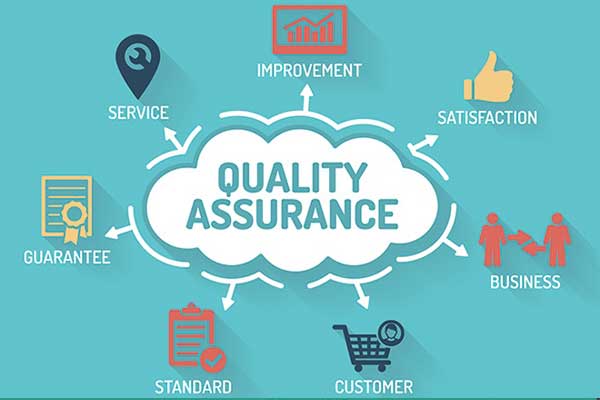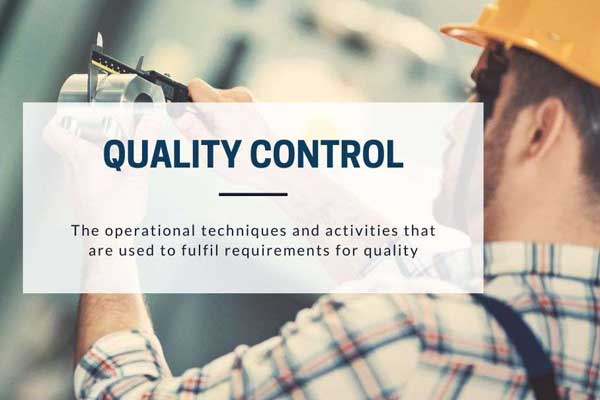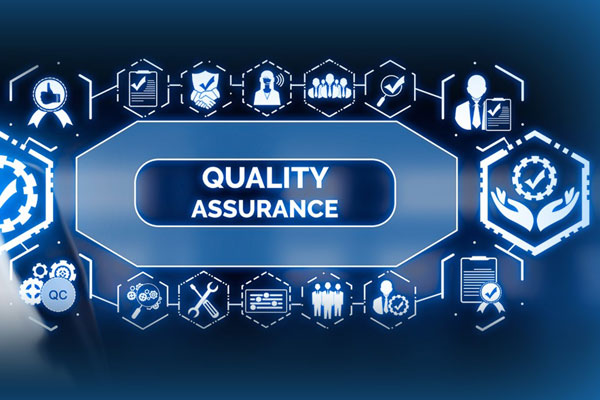Before we delve into the topic of quality assurance, let us discuss the meaning of the terms quality and assurance.
What is quality?
There is no technical definition of quality as it is a complicated concept that can not be quantified or defined. A simple description of quality is “fit for purpose or use.” This means that any product or service is deemed to be of high quality if it meets the needs and expectations of the customer for whom they were designed. Price, durability, reliability, design, and functionality expectations can be related. By this definition, we can say that quality is the degree to which an entity, an object, a process or a service satisfies the specific set of requirements or attributes of its target audience. Hence, the quality of something can be determined by comparing its inherent characteristics with a group of target audience requirements.
What is assurance?
Assurance can be described as a positive declaration about a service or a product that increases the confidence of those who use it. It is an inherent characteristic of a product or a service that provides certainty regarding its usage. In simple terms, it is a warranty that the product or the service will work as it is intended to work and there will be no problems as per the requirements or expectations of the customer.

the definition of quality assurance
By combining the above two definitions or descriptions, we understand that quality assurance maintains a desired level of inherent characteristics that satisfy the customer’s needs. It is the process of giving attention to every stage of product delivery so that the desired level of quality is maintained.
How to do quality assurance?
Quality assurance has a defined process called the Plan-Do-Check-Act (PDCA) cycle. This cycle is also known as the Deming cycle. The phases of this process are:
- Plan: Organisations must plan and establish a process related to the objectives to deliver high-quality products or services.
- Do: During this stage, the processes must be developed and tested to align with the objectives and targets.
- Check: During this stage, the processes must be monitored, modified and checked to see if they adequately meet the predetermined objectives.
- Act: A quality assurance auditor must evaluate how the processes have progressed to see if any actions can be implemented to improve the efficiency of the processes.
During the action stage, as corrective or improvement activities are implemented, it harbours in the first phase, namely, the planning phase, thereby restarting the entire cycle.
ISO 9001 and quality assurance
The ISO 9001 standard is a set of recommendations developed by the International Organization for Standardization (ISO) to help organisations identify customers’ needs and create products in alignment. The PDCA cycle is implemented in the 10 clauses of the standard to help business owners efficiently conduct quality assurance in their operations.
The first three clauses contain introductory terminology, while the remaining seven clauses are mandatory. However, businesses have the liberty to exclude the sections which you do not apply to their organisation.
The fourth clause talks about the organisation’s context, and businesses must provide a high-level overview of their Quality Management System (QMS) as it aligns with the organisation’s context. The fifth clause focuses on leadership, and the top members of the organisation must showcase their commitment to delivering quality services that are customer focused by establishing a quality policy and supporting it with adequate resources. The following clause is planning, and businesses must identify the quality objectives, risks and opportunities to outline a plan to address each of these aspects. The seventh clause is supported, and to implement a successful QMS, organisations must have the proper infrastructure, resources, people, tooling, skills, operational environment and processes in place. The eighth clause covers operational planning and control, requiring businesses to look critically at their products or services to identify how their provision can become more efficient. The ninth clause is performance evaluation, and companies must measure the performance of the QMS operations and activities to evaluate if they are meeting the objectives. The last clause is continual improvement, urging businesses to take corrective actions whenever required.

What is quality control?
Quality control aims to check whether the products or services meet the specifications and requirements of the customer.
Quality assurance vs quality control
Quality control is the process of examining the product or services to check for the results. In contrast, quality assurance is exploring the processes to ensure they are “fit for purpose.” Quality control is reactive, line-function and aims to find defects, whereas quality assurance is proactive and aims to find areas of improvement and staff function.
Also read ” the difference between ISO certification and accreditation ”
Conclusion
Quality assurance is the process of providing certainty that the product or the process is “fit for purpose.”








Users Comments
Get a
Quote